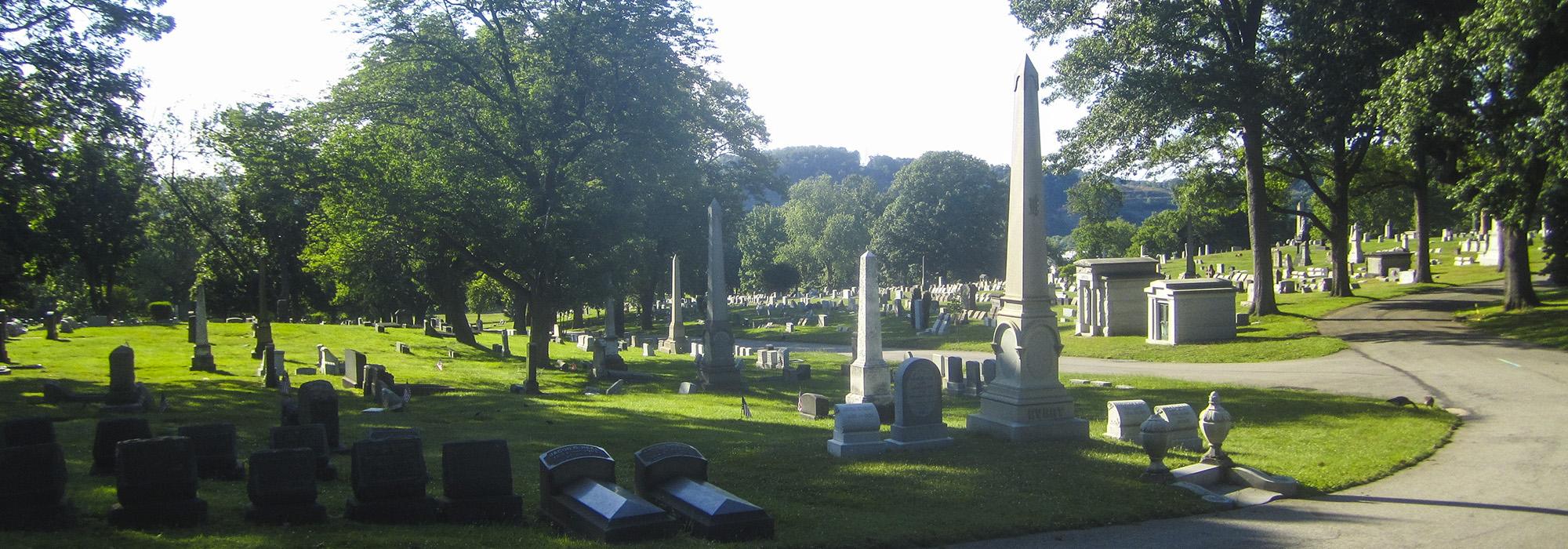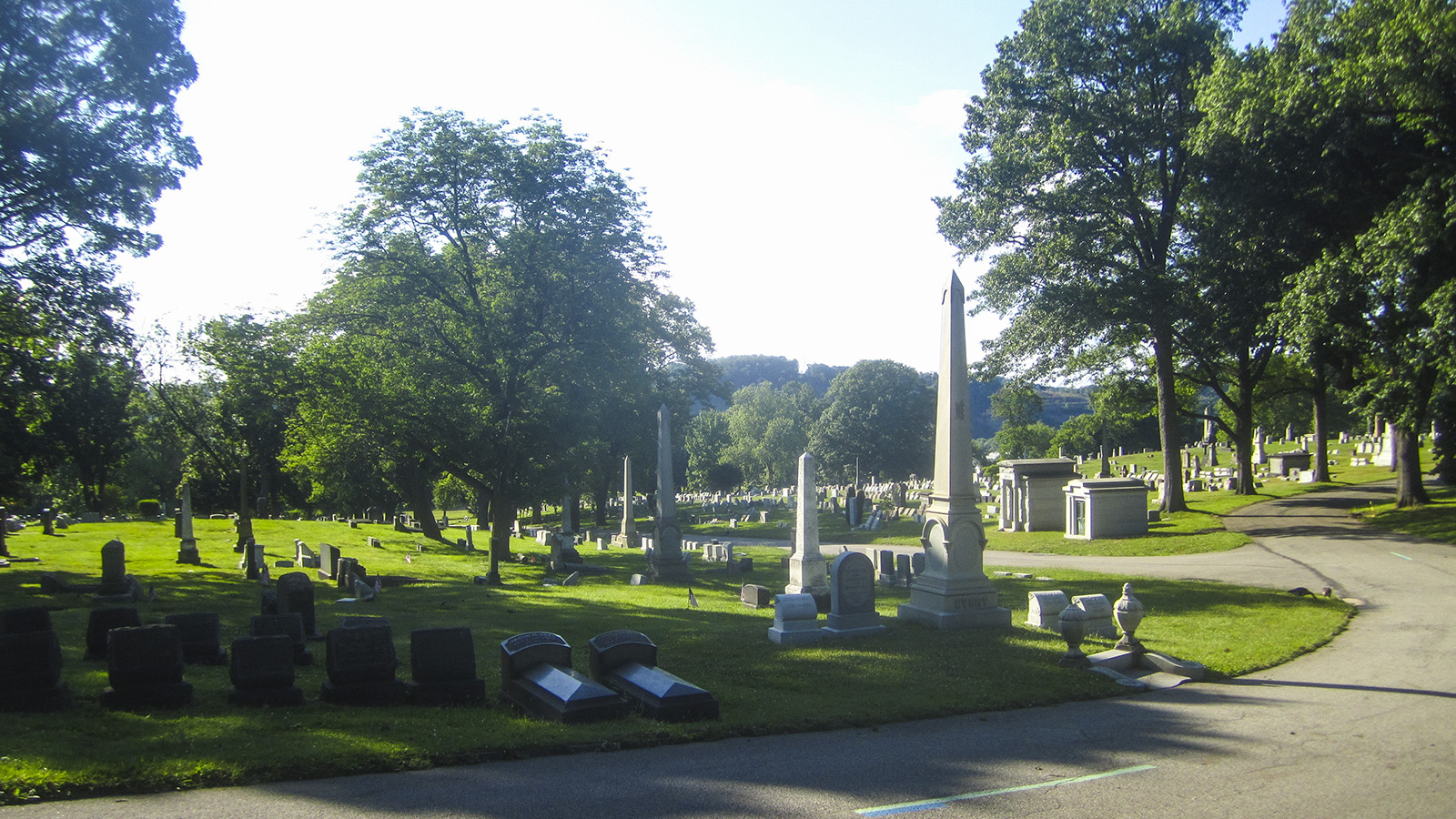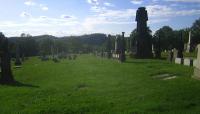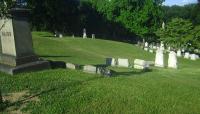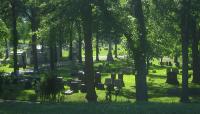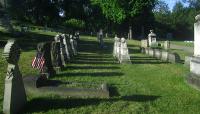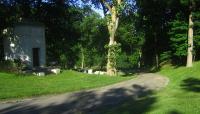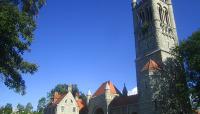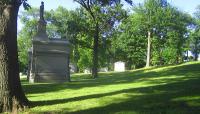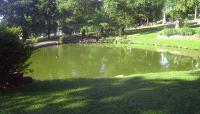Landscape Information
Begun in 1845 on a 100-acre hillside homestead above the Allegheny River, the cemetery was originally modeled after Mount Auburn Cemetery in Cambridge, the nation’s first rural cemetery. Architect John Chislett, the cemetery’s first superintendent, created a park-like setting with gently curving roads, single and clustered plantings of deciduous and evergreen trees, and graves laid out in long parallel rows. The naturally rolling topography and views of the river added to the picturesque quality of the site.
During the Civil War a section of the cemetery was set aside for Union soldiers killed in battle. Extending the rural cemetery tradition of honoring veterans and war heroes, the remains of Commodore Joshua Barney were moved into the grounds and a sizeable monument was built in commemoration in 1880. The Butler Street Entrance Complex was begun in 1849 with the English Gothic Gateway and Lodge, also designed by Chislett. Later additions to the complex include the Administration building, built in 1870, and an elaborate fountain from 1873. The cemetery soon grew to 240 acres, which were laid out in the same picturesque manner as the original 100 acres. In 1889 the Romanesque-style Penn Avenue Entrance Complex, designed by Henry A. Macomb, was constructed. The cemetery continued to develop with the same character between 1903 and 1928, when landscape gardener William Falconer was superintendent. A Soldiers Memorial was dedicated in 1937 and in 1961 the 5,000 Crypt Temple of Memories was completed. Allegheny Cemetery was listed on the National Register of Historic Places in 1980.



